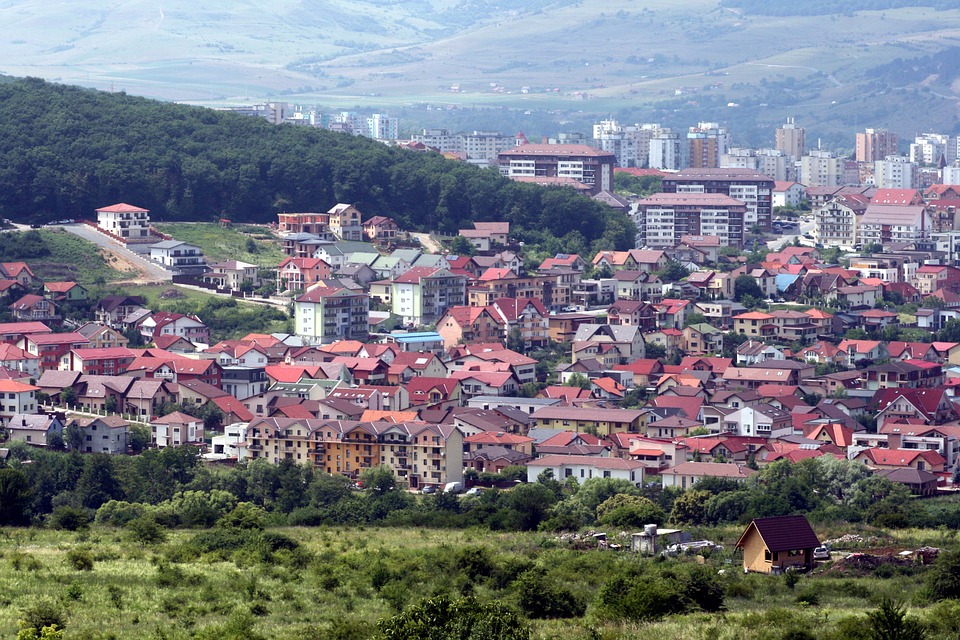
I discovered the city of Cluj-Napoca thanks to a friend and so I found out that it is a beautiful city worth visiting. For those who do not know, it is the municipality of residence of Cluj County, Transylvania, Romania. The name Cluj comes from Castrum Clus, first used in the 12-th century as the name of the citadel surrounding the city. Clus means "closed" in Latin and refers to the hills that surround the city. Cluj-Napoca, known simply as Cluj.
Cluj-Napoca has a multitude of tourist attractions and monuments, such as the Church of St. Michael in Unirii Square, built in the fourteenth century in Gothic style, with the statue of Matei Corvin in front, or the Palace of Justice in Avram Iancu Square. In Cluj-Napoca is the largest university in Romania, Babes-Bolyai University, with the famous Botanical Garden"Alexandru Borza" located near the city center. Union Square and Museum Square are the most important attractions of the city.

The first documentary attestation of a settlement on the territory of today's Cluj was made by the Greek geographer Claudius Ptolemy, who mentioned here one of the most important localities in Dacia, named Napuca. The first attestation of the Roman Naples dates from the period immediately following the wars of conquest of Dacia, from the years 107-108.
For those who want to visit Cluj-Napoca, should know that it has in its cultural heritage several statuary groups and monumental statues that contribute to the enhancement of the tourist and historical side of the city. The best way to see the city is with the help of a guide.
The area around the city is largely covered with forests and grasses. Rare plants can be found such as lady's slipper, iris, strawberry, snake, etc. There are two well-known botanical reservations - Fânaţele Clujului and Valea Morilor.
For those passionate about extreme adventures and climbing in Cluj there is Gecko Park. Five climbing routes, five different levels, five colors on which you can test your skill.

Cluj-Napoca is the country’s second largest city, located in the center of Cluj County and covers an area of about 180 km2 on Someşul Mic river. Surrounded on three sides by hills with heights between 500 and 700 meters, it has the appearance of a real fortress.
The city have the film and music festivals that the city hosts in spring and summer like The days of Cluj-Napoca, Untold Festival, Electric Castle, Jazz in the Park, Transylvania International Film Festival (TIFF), Street Food Festival.
Many are conquered by the land of Transylvania, considering it a superb place. So if you want to visit this area you should not miss Cluj-Napoca which is right in the heart of Transylvania.
Points of atractions- Tourist objectives
Museums:
The Art Museum
The Art Museum of Cluj-Napoca is an art museum housed in an important Baroque building from the eighteenth century, the work of German architect Johann Eberhard Blaumann, and has placed a special heritage of Romanian and European art values: painting, graphics and decorative art (15th - 20th centuries). Founded in 1951, the museum has benefited, since its inception, from some older funds: a small part of the collection of curiosities, goldsmithing, furniture and European art, from the Transylvanian Museum and especially the collection known as the name "Pinacoteca Virgil Cioflec".
A cultural act is linked to the name of Virgil Cioflec (1876 - 1948), author of some reference monographs dedicated to the painters Ștefan Luchian (1924) and Nicolae Grigorescu (1925), as well as to some pertinent writings about art published in the press of the time. of great significance for the life of interwar Cluj: the donation of its Romanian art collection, University of Cluj (1929 - 1930). The opening to the public of the Virgil Cioflec art gallery in 1933 meant, in fact, the opening in Cluj of the first museum of modern Romanian art, whose successor became the National Museum of Art Cluj. The Virgil Cioflec collection still presents today the value nucleus of the patrimony of the National Museum of Art Cluj
Historic buildings and areas
Cluj Court of Appeal
Cluj Court of Appeal was established based on Hungarian law no. XXV from 1890, together with the courts of appeal from Oradea Mare, Târgu Mureș and Timișoara. Initially, it had seven courts in its field of activity, namely those in Alba Iulia, Bistrița, Cluj, Dej, Deva, Sibiu and Turda. After the union of Transylvania with Romania, the Cluj Court of Appeal functioned until 1924 based on the normative provisions of the Governing Council, and from 1924, based on the law of June 25, 1924 on the Judicial Organization of the Romanian Kingdom. Based on this law, the Cluj Court of Appeal included in its jurisdiction the courts from 6 counties: Alba county (interwar), Cluj county (interwar), Hunedoara county (interwar), Năsăud county, Someș county, and Turda county.
During 1940-1944, following the Vienna Dictate, the Cluj Court of Appeal functioned in Sibiu, and the Royal Hungarian Court of Appeal was established in Cluj, until 1944.
After the Second World War, in 1945, the Court of Appeal returned to Cluj and continued to function until the judicial reform of June 19, 1952, by which the courts of appeal were abolished. At the same time, the Cluj Regional Court was organized. The Cluj Court of Appeal was re-established based on law no. 92 from 1992.

The Roman Catholic Church of St. Michael
St. Michael's Church is one of the most imposing cult buildings in Romania, 70 meters long and with a maximum tower height of 80 meters.
The building was built on land that served as a cemetery and where there was a chapel dedicated to St. James. Very little data remains on the erection of the building. The main document preserved is one issued by the papal court at Avignon, in January 1349, which forgave the sins of those who would help financially the construction of the place. The construction took place in two phases: the first began in 1316 and was completed in 1390, followed by a second phase between 1410-1487. In 1390 the altar was completed.
The Matia Corvin monumental ensemble from Cluj-Napoca
The monumental ensemble Matia Corvin, consisting of five statues representing King Matia (equestrian) and his four generals, was unveiled in 1902 in the Great Square of Cluj. The model of the work, the work of the artists János Fadrusz and Lajos Pákey, won in 1900 the grand prize of the Universal Exhibition in Paris. The Cluj monument has become over time one of the distinctive signs of the city.
The idea of erecting a statue of Matia Corvin in Cluj dates back to 1882, the year in which the Cluj City Legislative Council established the execution of a monument in honor of the city's great son. The model of János Fadrusz was approved unanimously by the local authorities in 1894. The architect Lajos Pákey designed the base of the statue, representing a bastion of the wall of the city of Cluj. The equestrian statue of Matia Corvin is distinguished by the positioning of all four horses' hooves on the ground, which, according to tradition, means that the character on the horse died a natural death, and not in battle.
The monument was funded by public subscriptions. The high costs of building the monument delayed the inauguration, so the festivities took place only on October 12, 1902. The bronze statues of Matia Corvin and the four commanders were brought by train from Budapest and transported on the rails of an old tram line. with horses to the center of Cluj, where they were placed on the stone plinth. To remain in the memory of Cluj, János Fadrusz gave his face to one of the bronze personalities who guard King Matthias, namely General Stefan Báthory.

The old center of Cluj-Napoca
The old center of Cluj, formed by Piata Unirii - Bulevardul Eroilor. The center is individualized compared to the rest of the city through a series of architectural and historical monuments, buildings from the XVII-XX centuries. On the sides of streets such as King Ferdinand, Heroes, Iuliu Maniu, Napoca, Memorandum and December 21, there are impressive buildings in Baroque, Renaissance and Gothic style. In recent years, the center has been adorned with modern buildings such as bank offices and public institutions.
Here we can find historic buildings that hide many stories and secrets, narrow streets that lead to pedestrian squares, full of charm, churches of various denominations.


The equestrian statue of Mihai Viteazul
The equestrian statue of Mihai Viteazul, 7 m high, mounted on a 4.70 m high pedestal, is placed on a platform with three ramps, decorated with bas-reliefs, representing the battles with the Ottomans and the Union of Moldova and Transylvania with Wallachia.
On the pedestal of the statue there is a sealing coat of arms of the ruler, which brings together significant heralds of the three Romanian countries. An inscription with the text is also mounted on the pedestal
Mihai Viteazul / 1593-1601 / Lord of the Country / Romanians of Transylvania and / of the whole Country of Moldova.
General Ion Coman, who in 1976 was at the head of the Romanian army, reported that it would be, initially, the model of this statue that had entered the competition for Alba Iulia, and will be placed near the Union Hall. The objection was also raised that the statue is a bit tall compared to the buildings in the area, although this was not a decisive argument to eliminate it. But, without taking into account the arguments, Nicolae Ceaușescu intervened, and gave Oscar Han the victory.

Casino Urban Culture Center Cluj
Casino Urban Culture Center Cluj is located in the Central Park "Simion Bărnuțiu" and has recently become a real host of cultural and artistic events that take place in Cluj.
The building is an historical monument, being built at the end of the 19th century, in an eclectic Viennese style. The construction of this real palace was based on the plans of the architect Pakey Lajos, who also designed the famous Hotel Continental and other historic buildings in Cluj.
Over time, the building served as a casino, ethnographic museum (interwar period), school of fine arts (1925) and restaurant.
Avram Iancu Square&The statue of Avram Iancu
Avram Iancu Square is one of the most important markets in Cluj. During the administration of Mayor Gheorghe Funar (PRM) in the middle of this square was erected the statue of Avram Iancu, a monument criticized as disproportionate and unsightly. At the same time, in 1993, the Funar administration gave the market its current name, although in another part of the city there was already a street named Avram Iancu.
Until the second half of the 19th century, this square was, in turn, a training ground for soldiers, a pasture and then a cattle and wood fair. During the Belle Époque period, the market area was rethought as an extension of the civic area of the city, when the project was initiated to build two markets in this area, one to the north and one to the south, in extension of the other. The southern square, initially Huniade Square, was renamed by the Romanian authorities in Ștefan cel Mare Square. The old northern square, initially EMKE Square (abbreviation of the Cultural Society of the Transylvanian Hungarians, similar to the Romanian society ASTRA), was successively renamed Bocskai Square (after the Transylvanian prince Ștefan Bocskai), then Cuza Vodă (since 1923). During World War II, the Hungarian fascist authorities named it Adolf Hitler. After the Second World War, it was renamed Malinovsky Square, after Rodion Malinovsky, the victorious Soviet marshal in the Battle of Stalingrad, where German, Hungarian, Romanian, Italian and Croatian troops were surrounded. In the context of the dissensions between the Romanian communist regime and the Soviet communist one, during the Nicolae Ceaușescu regime, the name Malinovski was replaced in Victoriei Square. Since 1993 it has been the current name.
The statue of Avram Iancu from Cluj-Napoca, dedicated to the memory of the Romanian historical figure, is located in Avram Iancu Square, in front of the Orthodox Cathedral, on the site of former monument of Soviet heroes.
From the middle of an artesian well, rises the pedestal of the statue, made up of stone blocks that symbolize the rocks of the Apuseni Mountains, the birthplace of Avram Iancu. At the top of the composition, immortalized in bronze, Avram Iancu, with his back to the Orthodox Cathedral, looks towards the Romanian Opera, whose access steps are flanked by the statues of the poets Lucian Blaga and Mihai Eminescu. Near the base of the pedestal, three tulnicărese call motions to battle, together with Avram Iancu.

National Theater and the Romanian National Opera
The first city theater (in Hungarian) in Cluj dates from 1821, being located on the site of the current building called "Casa Universitarilor" (str. M. Kogălniceanu). At the beginning of the 20th century, a new building was planned to house this institution, the old building being inadequate. In 1904, the construction of the new building began in the current Ștefan cel Mare Square, on the site of the former wooden market of the city. The works, completed in 1906, were executed by the famous theater construction company Helmer and Fellner. The building was inaugurated on September 8, 1906 with a performance of the Hungarian Theater, whose director was Jenő Janovics. Built in Baroque-Rococo style, the building has a capacity of 1000 seats and three rows of loggias.
The Romanian Opera in Cluj is in the same building as the theater. The first performances began in 1920, with Verdi's Aida, and here took place the national premiere of Lucian Blaga's dramatic work. The building is under the protection of UNESCO Heritage
Matia Corvin House
Matia
House in Cluj-Napoca, originally "Stefan Kolb House", is one of the
oldest architectural monuments in Cluj, the only palace in Cluj during
the transition from Gothic to Renaissance style. In this building,
located in the Middle Ages on Sf. Spirit Street no. 258 and currently on
Matei Corvin Street no. 6, King Matias Corvinus was born.
The
building was built in the 15th century and is located inside the first
defense enclosure belonging to the old fortress. It originally belonged
to the Saxon patrician Stefan Kolb. According to other sources, it was
also used as an inn, and in 1740 it was bought by the city of Cluj,
fulfilling other purposes, such as prison or hospital. In 1887, Emperor
Francis Joseph paid a visit to the city, on which occasion a
commemorative plaque was placed on the building, designed by Lajos Pakey
and made by the sculptor György Zala. The plaque still exists today,
and the Hungarian text engraved on it is:
"Matia Corvin, son of the
voivode of Transylvania Ioan de Hunedoara, was born in this house on
February 23, 1440. Later, Matia Corvin became king of Hungary between
1458-1490, being considered one of the greatest Hungarian monarchs.
decided to exempt the building from taxes and duties, an exemption which
was respected by the rulers who followed him."
On October 22,
1902, the Museum of the Transylvanian Carpathian Society was opened on
the premises, one of the most beautiful museums in Transylvania at that
time, dedicated to tourism, ethnography and balneology. Here was
exhibited a collection of over 7,000 objects, including pottery,
embroidery, agricultural tools, harbors, rural household items. Two of
the rooms of the building were intended to evoke the memory of Matia
Corvin, being exhibited the 7 models that competed in the competition in
1894 for the creation of the statue of Matei Corvin. More than 2,000
volumes of the collection had been donated by university professor Otto
Hermann. The museum operated until 1935.

Places for relaxation and fun
Museum Square
The Museum Square is the oldest square in Cluj-Napoca, being built in the location of the first fortress of Cluj. The current name comes from the fact that in the Petrechevich-Horvath House, on the western side of the square, is the National Museum of History of Transylvania. Also in the square are the Carolina Obelisk, the Mikes House and the Franciscan Church.
It is a favorite meeting place among the locals, always populated and full of life. In the pedestrian square there are, besides modern terraces, stalls of folk craftsmen with unique pieces and historical monuments. The one that gave the name of the square is the National Museum of History of Transylvania, located on one of its sides.
The Orthodox Cathedral
The Orthodox Cathedral of Cluj-Napoca, located in Avram Iancu Square, was built during the years 1920-1930, immediately after the union of Transylvania with Romania. It is one of the main religious buildings in Cluj-Napoca. It is dedicated to the "Assumption". In 1973, with the elevation of the diocesan seat of Cluj to the rank of archbishopric, the place of worship became an archbishopric cathedral. Since 2006, the building has served as the cathedral of the Archbishop of Vad, Feleacu and Cluj, who is also Metropolitan of Cluj, Maramureș and Sălaj.
It is currently the third tallest cathedral in Romania, after the Orthodox one in Timisoara and the Evangelical one in Sibiu. It is also classified as a historical monument,representative of the local cultural heritage.
The initiative to erect it belonged to Bishop Nicolae Ivan. He addressed the Transylvanian Governing Council since 1919, in order to request the financial aid necessary to build an Orthodox cathedral in Cluj. The council approved the bishop's request, initially offering 2 million Austro-Hungarian crowns. In 1920, Bishop Nicolae Ivan requested the Cluj City Hall that the park in front of the National Theater be ceded for the construction of the cathedral, a request that was also accepted.
Neolog Synagogue
The Neolog Synagogue is a mosaic place of worship in Cluj-Napoca, located on Horea Street no. 21 (formerly Franz Joseph Street). The building was built between 1886 and 1887 in the Moorish style. It is now also known as the Memorial Temple of the Jewish Deportees.
The synagogue was built between 1886 and 1887 in the Moorish style, according to the projects of the railway engineer Isidor Hegner, being inaugurated on September 4, 1887. The facade of the synagogue is a combination of traditional elements with those of oriental inspiration. Nagy Utca, Ulița Mare, the street on which the synagogue was built, was modernized and renamed at the end of the 19th century in Franz Joseph Street. The colloquial was called Zsidó Utca, the Street of the Jews.
It was severely damaged by the legionaries on September 13, 1927, and was later restored with the support of the Romanian government. After the Vienna Dictate (1940), when northern Transylvania was occupied by Hungary, the Horthy authorities turned the Neolog Synagogue in Cluj into a warehouse. After the deportation of Jews to Nazi camps, the synagogue was again severely damaged on June 2, 1944, due to bombings on the nearby station. The synagogue was rebuilt in 1947.

Many are conquered by the land of Transylvania, considering it a superb place. So if you want to visit this area you should not miss Cluj-Napoca which is right in the heart of Transylvania.
You can take a maximum of 500 characters from this article, the condition is to specify and visibly insert the link of the article.

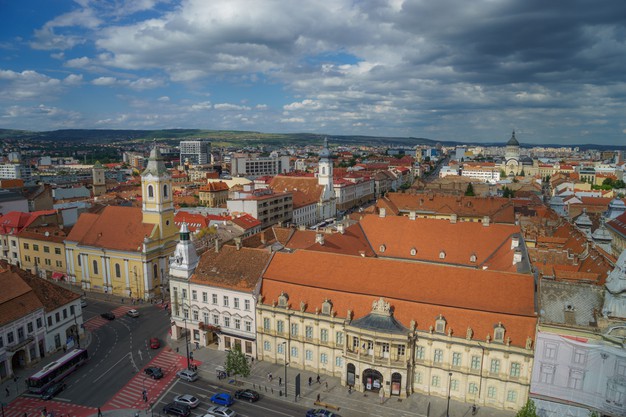
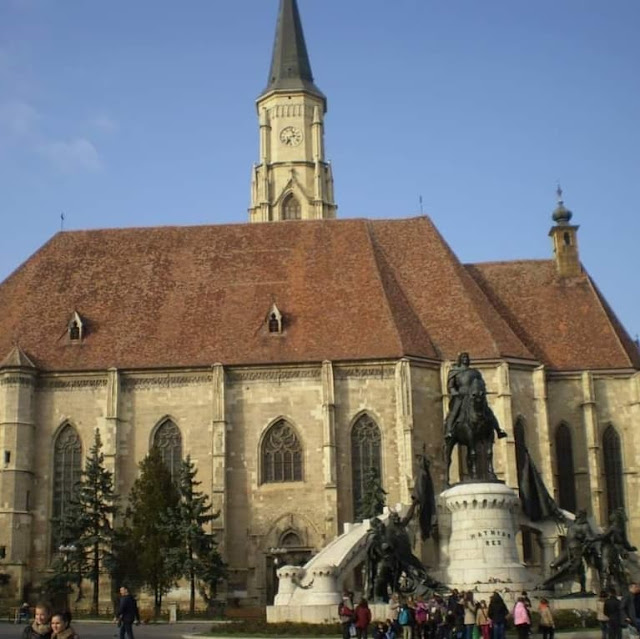
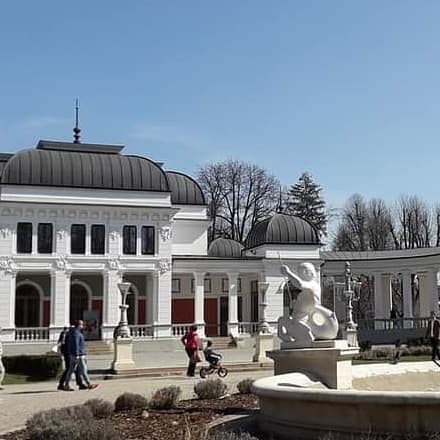
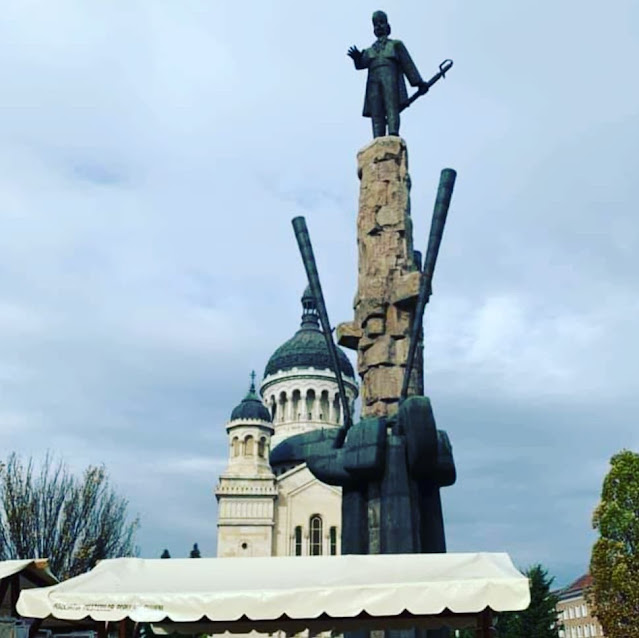
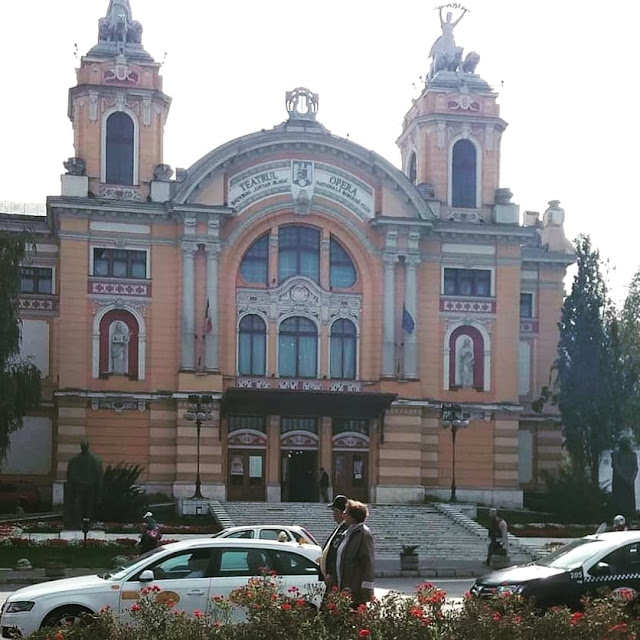


Comments
Post a Comment